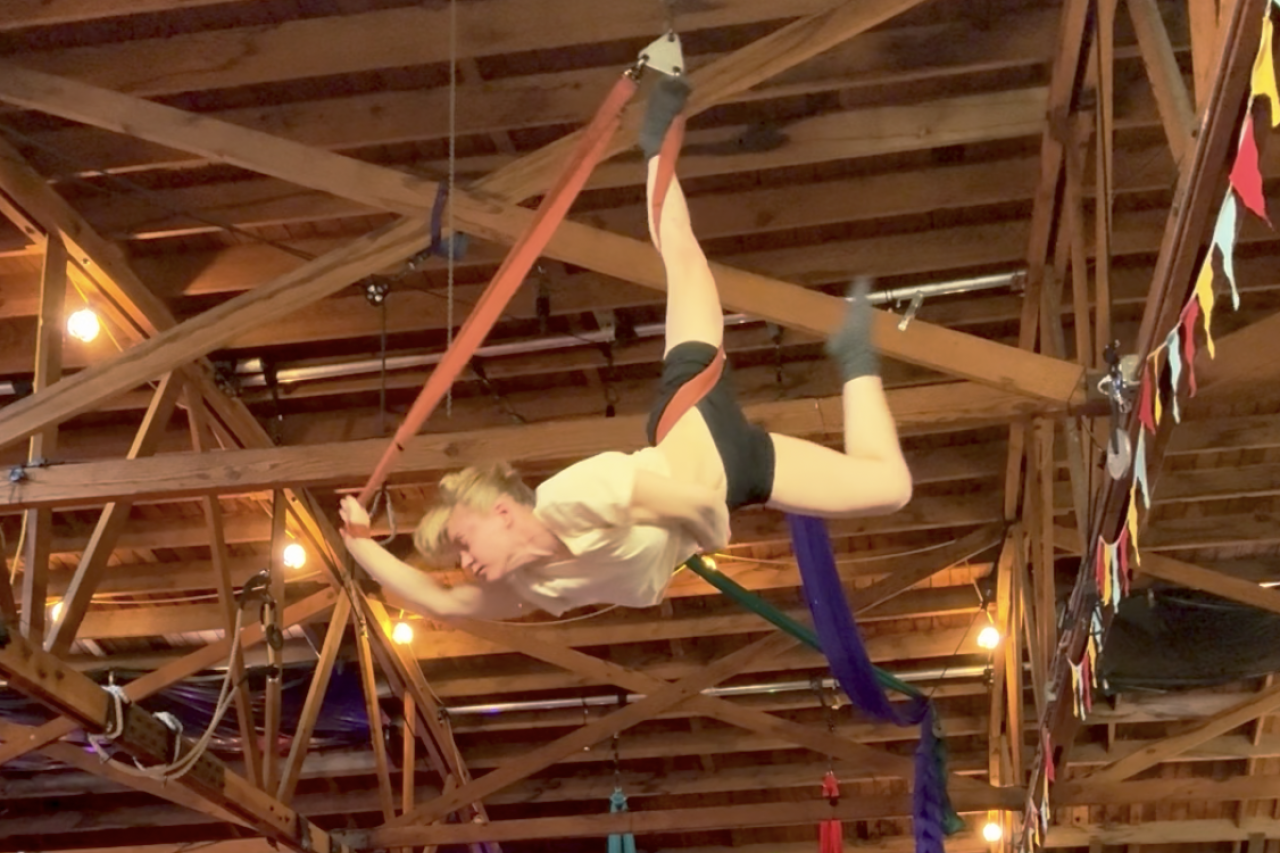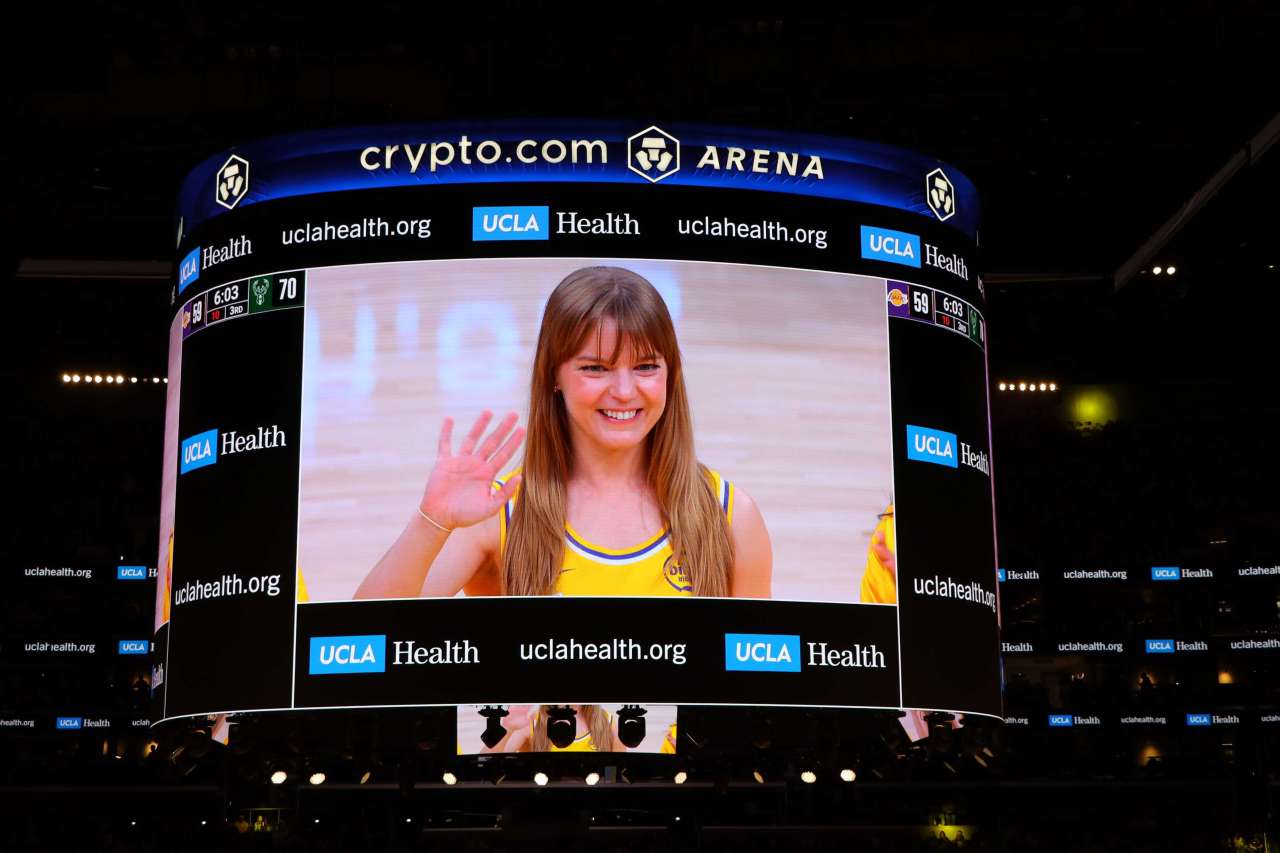As an aerialist, Rachel Tatem has performed for countless fans at Disneyland, soared over diners at a trendy supper club and taught aspiring trapeze artists at a Los Angeles circus school. Her favorite airborne memory is the motorcycle high-wire act she performed with a traveling circus in Puerto Rico, where she flew from a trapeze hanging from a motorcycle as it zipped back and forth on a tightrope 30 feet above the ground.
“I’ve gotten some really beautiful opportunities,” says Tatem, 37.
A competitive gymnast in high school and college, Tatem entered the corporate world after graduating from the Massachusetts Institute of Technology, working as an engineer for a medical device company. But she missed gymnastics – which she calls “that big, big hobby of mine” – and, after a few years of recreational training, decided to bet on herself and become a full-time performer.

Which is why the injury she sustained in April of 2024 was so scary. Tatem was training, admittedly a little tired from rehearsals the day before, when she put more pressure than usual on her left elbow and “heard a pop.”
“It felt weird right away,” she recalls.
But she told herself it was probably nothing.
“I was in the thick of rehearsing and I didn’t want to lose out on any opportunities, so you just kind of tell yourself it’s OK,” she says. “Deep down, I could tell that this was different … it felt like a different kind of pain, like something that I had not experienced before.”
A career-ending injury?
Her colleagues reassured her that she was fine, that if she’d torn her biceps tendon it would be obvious. Tatem wanted to believe them. She saw a physical therapist who helped her rehabilitate the injury enough to get back to work, “but it was challenging, and I still had to water things down quite a bit,” she says.
By the time Tatem saw an orthopedist, she actually felt like she was finally getting better. But an MRI scan showed all was not well: her biceps tendon was torn and wouldn’t heal on its own.
That’s how she ended up in the office of Edward Cheung, MD, a sports-medicine specialist and orthopedic surgeon at UCLA Health.
Biceps tendon tears are not uncommon, he says. This type of injury often happens when two people are moving something heavy, like a couch or a refrigerator, and one accidentally drops their side of the load. The person left holding the heavy thing suddenly experiences extra weight pulling their arm down, which they try to resist, “and that’s usually when the tendon snaps off the bone,” Dr. Cheung says.
People who experience this injury typically lose strength in the arm, finding themselves unable to twist a doorknob or take the lid off a jar. And the injured arm often looks different, Dr. Cheung says: “You kind of have this Popeye funny-looking biceps because the tendon has retracted and the muscle bunches up.”
The surgical procedure to repair a biceps tendon tear is generally straightforward, he says. Through a tiny incision near the elbow, the surgeon reattaches the torn tendon, and within a few months, the person is back to all their normal activities.
For Tatem, however, things were more complicated.
Reconstructive surgery
Because more than four months passed between the injury and the repair, Tatem had scarring throughout the elbow area, which is dense with the nerves and blood vessels that control the hand – “obviously an important thing to try and avoid,” Dr. Cheung says.
He would not be able to reattach the original tendon, nor access the area with a minimally invasive incision. Reconstructive surgery would require a cadaver tendon sewn into the biceps muscle. With this type of procedure, Dr. Cheung couldn’t guarantee Tatem would regain the strength and mobility she had before.
“He didn’t try to scare me in any way, but he didn’t falsely reassure me either,” Tatem says. What was “super reassuring,” she says, was learning that Dr. Cheung has ample experience working with athletes – he’s a team physician for the Los Angeles Chargers and UCLA men’s baseball, volleyball and gymnastics teams.
Even though Tatem was able to perform without pain at that point, she worried about what might happen down the line if she didn’t undergo the procedure. Would she still have longevity as an acrobat? Would she have the strength to learn new tricks and skills? The biceps injury was the most significant in her career and its repair would be her first surgery.
“This injury has been a central focus of my life since it took place,” she says.
She underwent surgery for a chronic left distal biceps tear in September 2024.
Unable to work after the procedure (“All my jobs are physical,” she says), she devoted herself to recovering and regaining strength. Once the incision healed, she started physical therapy, as committed to it as she’d been to gymnastics training. After eight weeks, she could straighten her arm. Twelve weeks post-surgery, she was cleared to “try things in the air,” she says, but urged to “start very small.”
Tatem returned to rehearsals a couple months later. In March, she went back to performing full-time, a milestone she celebrated as a “Laker for a Day” – she and her friends toured Crypto.com Arena, posed for photos with the Laker Girls and watched a game from a private suite.
Of course, the greatest reward, for both Tatem and Dr. Cheung, is her unfettered return to her beloved sport and career.
Dr. Cheung characterizes her results as “amazing,” particularly after such a complex procedure.
“Most people are not hanging upside down by their operated arm,” he says. “That’s quite a bit of force she’s exerting on that repair, and the fact that she’s doing so well is really awesome.”
Tatem’s goal has always been to perform circus stunts for as long as she can. These days, her injured left arm feels as strong as her right. She’s feeling so good, in fact, that she rarely thinks about the injury anymore.
“I’m grateful to Dr. Cheung and the surgery and physical therapy teams for taking the injury as seriously as I did and showing me that it did not have to be a permanent setback,” Tatem says. “Having a good outcome from my surgery and being able to participate in the sport at the same level as I did previously has been a huge relief to me, both mentally and physically.”





